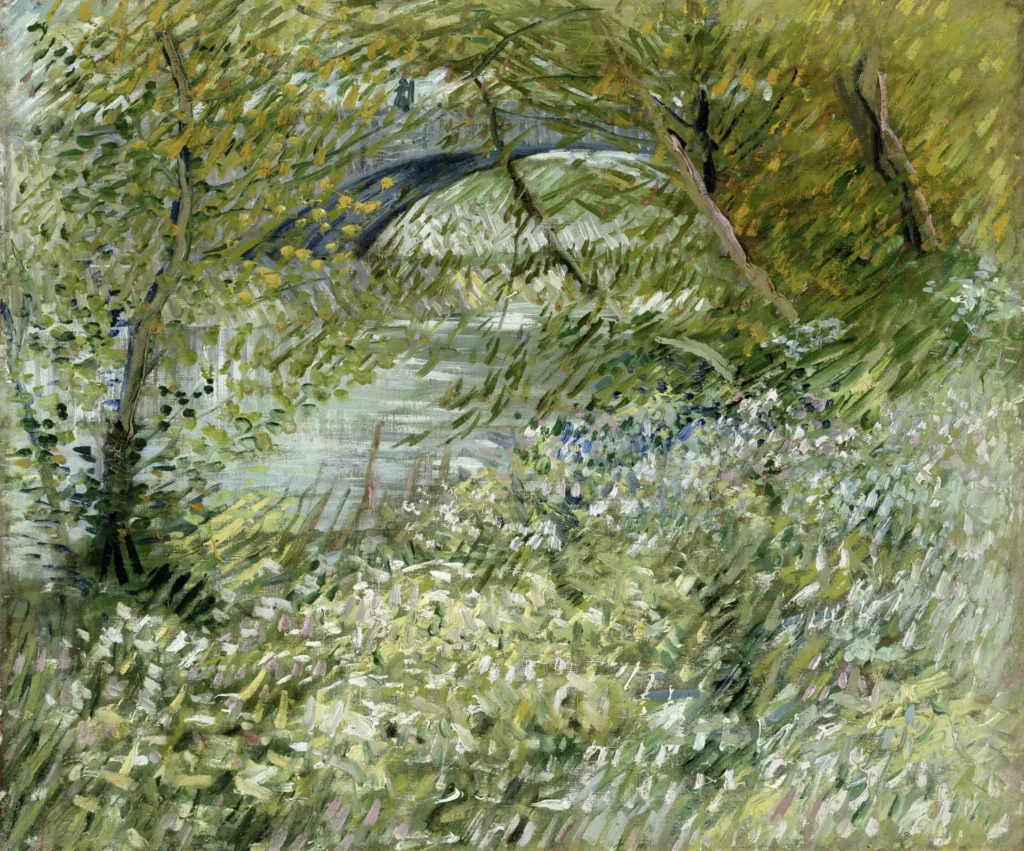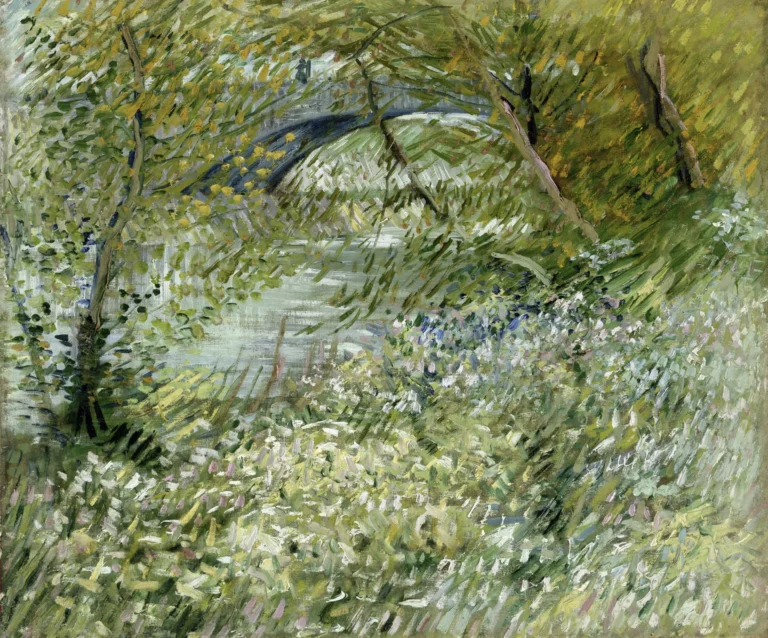River Bank In Springtime (1887)
Vincent van Gogh's River Bank In Springtime. created between May and July in 1887, captures the serene banks of the Seine River in a radiant display of color and technique. Measuring 19 1/4 inches by 22 7/8 inches, this oil on canvas painting exhibits Van Gogh's engagement with impressionist and neo-impressionist styles. Notably, remnants of a vibrant red border hint at its original inclusion in a triptych. Today, it forms part of the collection at the Dallas Museum of Art, thanks to a generous gift from Mr. and Mrs. J.N. Ray.
Year 1887
About the Artwork
During the spring of 1887, Vincent van Gogh was deeply entrenched in the vibrant art scene of Paris, influenced by the emerging styles of impressionism and neo-impressionism. In River Bank In Springtime. he encapsulates the lively essence of nature that characterized this period in his life. The composition vividly portrays the banks of the Seine River, embellished with expressive brush strokes and bright colors. The painting's red border hints at a larger artistic vision, as Van Gogh intended for it to be part of a triptych. His focus on capturing the essence of spring through the interplay of light and color showcases his groundbreaking approach to landscape painting, which would later influence countless artists.
Did You Know
During 1887, Van Gogh was significantly influenced by the impressionist movement, which emphasized light and color. This impact is evident in River Bank In Springtime through its lively brushwork and vibrant hues.
The remnants of a bright red border around the edges of the painting suggest that River Bank In Springtime was intended to be part of a triptych, showcasing Van Gogh’s desire for cohesive presentation of his works.
The painting is now part of the Dallas Museum of Art’s collection, a testament to Van Gogh’s timeless appeal, and it continues to inspire art lovers and historians alike with its brilliant portrayal of spring.










